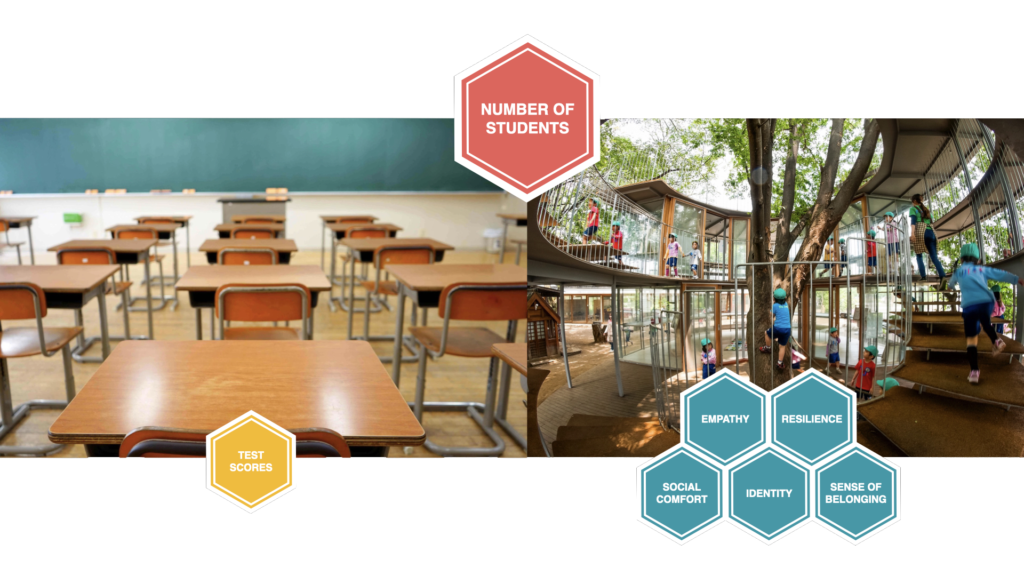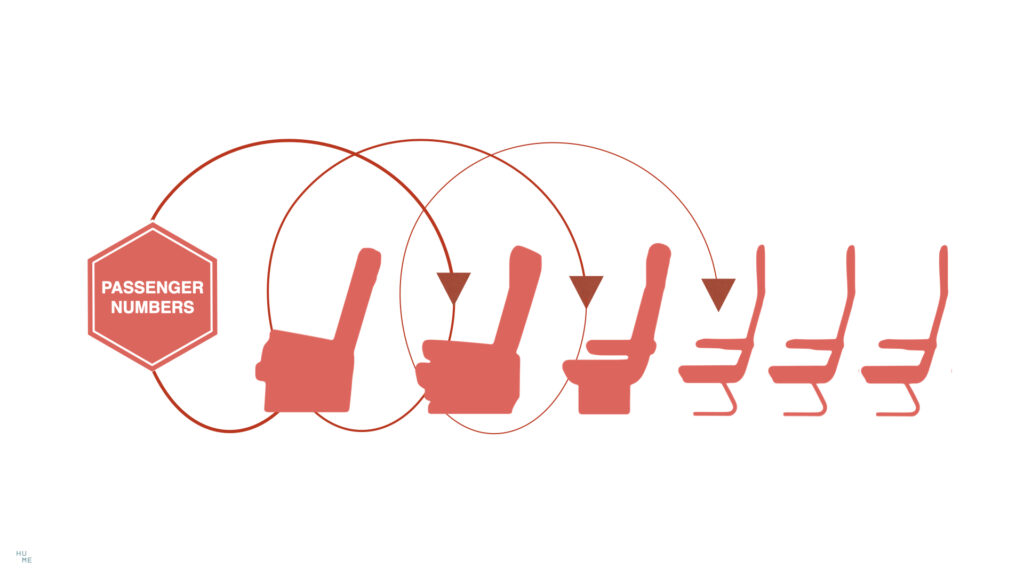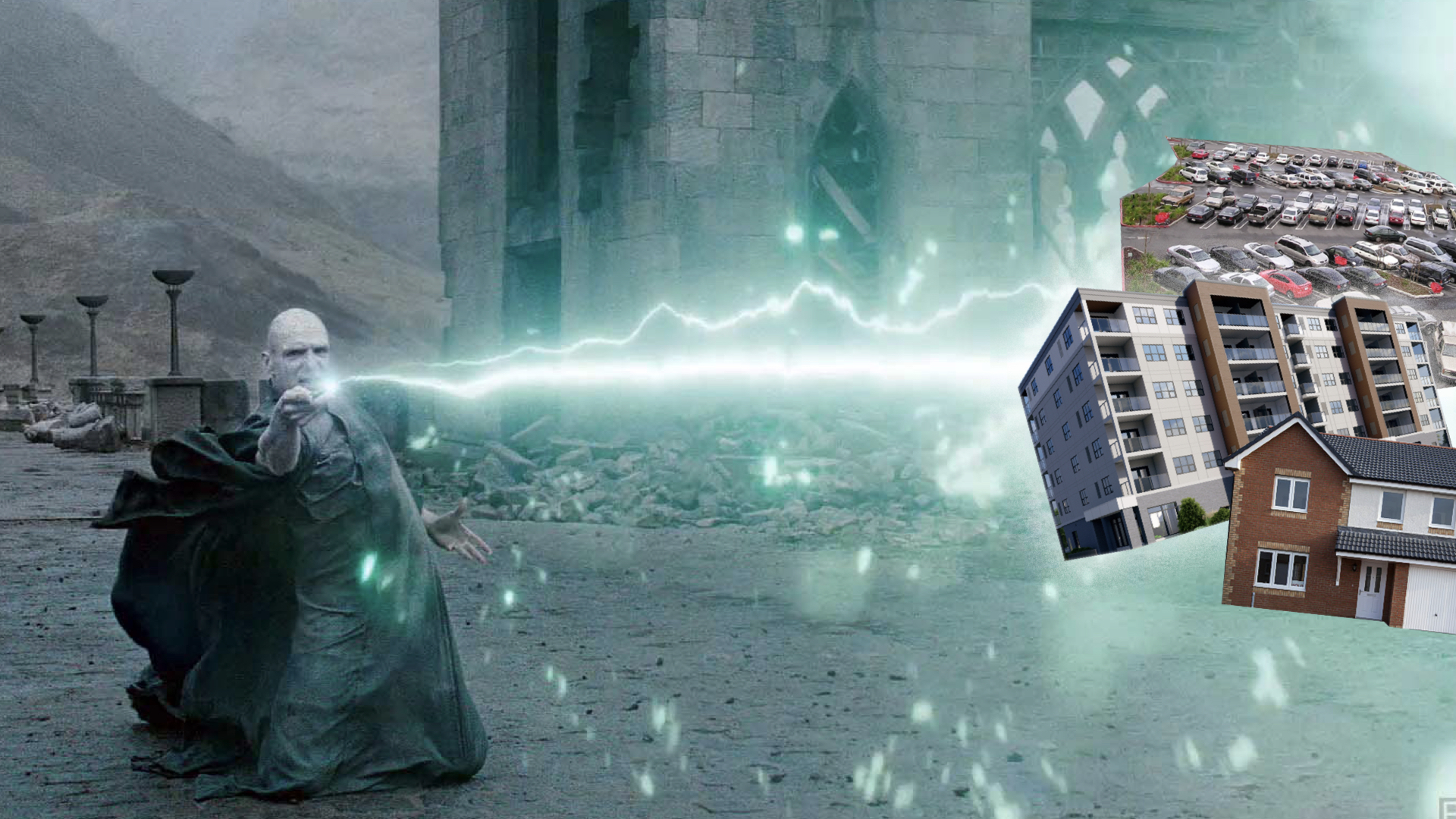This article was originally published in “Here & Now” by The Academy of Urbanism on September 1, 2023.
Do you ever walk around your neighbourhood and despair at new developments that contribute nothing to the look and feel of the city? On the whole it looks like we’ve committed to generic design as a status quo, yet no-one is particularly happy about it – so what’s going on?
It’s easy to blame architects and developers, but to see them as wholly responsible is to ignore the conditions that they work under. By the time a building has gone up, the process has involved possibly hundreds of people, each with their own responsibilities and interests.
We also at times bump into a new development that proves to us that good architecture is still a possibility even within the existing system – but to hedge our bets on the few who do put quality first is a piecemeal and unreliable approach. So the question is; what is it about the systems that produce places that set the bar so low?
I’d like to offer a lens into two mechanisms that I believe are at the core of the issue: Abstraction and Extraction. Their combined effect in the built environment is the depletion of placeness and all that comes with it: place attachment, belonging, social capital and health.
* Some housekeeping for the following observations; let’s assume that no-one is out there to intentionally create bland, uninspiring, or unhealthy environments. We are of course putting aside that architecture is used at times in purposefully damaging ways, but that is unlikely the intention in most cases, unless mediocrity has become the weapon of choice. Secondly, the goal of this short piece is to introduce a lens, so I will be only scratching the surface but I believe it’s the right surface and I hope a good scratch.
Suburbs as a product of Abstraction and Extraction par excellence
Let’s begin with a typology often overlooked when imagining vibrant cityscapes. Suburbs make up a significant portion of where people live, accounting for approximately 80% of the residential areas in the UK.
Suburbs shape the experiences of many families and childhoods. The lifestyles they produce is a topic often explored in pop culture, as well as empirical environmental research. Both highlighting the social isolation, alienation, and banality that suburbs create.
A common effect of suburban development is the erosion of Sense of Place. Sense of Place refers to the special meaning and identity that places hold for individuals. It encompasses emotions, personal experiences, biographies, stories, and imagination. This foundation for attachment to place spurs pro-environmental and pro-social behavior, fostering strong and resilient individuals and communities. The most important of these qualities are the feeling of uniqueness, the expression of local identity, and reflections of values that form a sense of belonging.
Yet, we habitually create places that lack the qualities necessary to evoke Sense of Place. The phenomenon is most perceptible in suburbs because their vastness is encompassing, but the same modes of production recur everywhere. Suburban mediocrity is global, and that should raise suspicion that its spread is rooted in modern economies rather than being a pan-cultural aspiration.
Suburbs emerged and stuck around because they create the perfect conditions for Abstraction and Extraction to thrive.
Abstraction
Abstraction refers to the process of considering something independently of its associations, attributes, or concrete accompaniments. Abstractions occur in many different ways in the design process and in the building industry.
Some abstractions are part of our production process. For example, designers create scaled representations of real places, simplifying living ecosystems into static drawings and models.
Other abstractions translate these representations into another language, quantifying and distilling them into metrics. In this manner, a new neighbourhood can be understood by the accountants of a project as simply a table of numbers.
While abstractions, or metrics are now inseparable from our design process and are crucial for effective communication, not all are created equal. This is especially true when metrics are chosen as measures of success for a project, as is the case in design briefs.
Take for example a brief to design a classroom for 30 students. Depending on the metrics chosen as measures of success for the design, the outcome can vary wildly. If success means fitting 30 students in the room to receive information, then simply creating a layout for seating is quite enough. But if success was defined as healthy child development, then the metrics would reflect the human experience of developing identity, of acquiring the social skills to interact and connect, to foster empathy and resilience. A completely different space is needed for that, which we are seeing now in countries with progressive education approaches.

Metrics and Capitalism
Metrics as our common language shape the way we think and make decisions. If something is measurable, it can become a project goal and a driver of design decisions. In this way, the evolution of spaces and places aligns to an optimisation based on the choice of metric. More often than not, these key metrics refer to capital.
Most of the time, the optimisation of a design is slow and hard to perceive. But an example that many have experienced is the shrinking of legroom in airplane seating. That’s because the metric driving its evolution is passenger numbers, of course at the cost of passenger comfort and wellbeing.

Capitalism exacerbates this reliance on capital-based metrics. The pursuit of profit often outweighs considerations of societal and environmental well-being. In capitalist systems, companies prioritize extracting maximum value with minimal investment. When a new development goes up, those who want to survive in the same conditions as their competitors will be under pressure to follow the same approach.
One form of abstraction is the bedrock of extractive practices; the representation of place as capital. Through centuries of land laws and feudalism, place has become a commodity like any other.
Extraction
Extraction refers to the action of extracting value from a location, mostly associated with but not limited to the exportation of natural resources. Large corporations supported by powerful nations often engage in extractive practices that leave indigenous communities impoverished and left with a depleted environment.
Extraction is a clear enabler of inequality and poverty, issues that not many people would champion as a product of their work. Yet, it is happening everywhere. Once again, if people aren’t purposefully harming others, there must be a framework making it easy to turn a blind eye. This is where Abstraction becomes the enabler of Extraction.
Extractive actions turn into statistics and numbers, into graphs in boardroom meetings and into statistics in profit reports. With the buffer of abstraction, decision makers can carry out harmful practices to answer to their responsibility for a company’s profit and growth.
Extraction disconnects capital from the place it originated. When we consider property development, are we not seeing the same process? In almost all cases, a development is a profiteering enterprise by a group of people disconnected from the place where capital is being extracted. Development becomes akin to mining; once the extraction is complete, the developer moves on.
The Role of Capitalism
When profit becomes the driver of design decisions, places lose out on the investment needed to create unique, healthy environments that help communities thrive.
An analogy to consider is the garment industry. Over the years, tailoring has given way to mass production. Although clothes have become cheaper – they have also worsened in quality and become more disposable. Tailoring requires the investment of time and skill to create a good fit whereas mass production uses approximations for fitting to maximise profits. When developers copy-paste homes into plots all around the country, we are missing out on the tailoring needed to create a Sense of Place.
Again, this can easily be seen as villianising the developer – but as I mentioned, they are also working within their system, which includes their own pressure to perform financially.
Without intervention, Abstraction and Extraction will continue to enable companies to prioritize profit even if it comes at the expense of others. They will continue to perpetuate a system which creates environments that depletes placeness.
When all this is laid out, the feeling is one of hopelessness. How can we change something so embedded and endemic?
Metrics as an upstream intervention
Progress in science is making it easier to measure and analyse human experience through more accessible technology and data analysis. Leveraging these developments to inform and assess the production of place can make the impact of design more apparent, and its intent more transparent.
The act of ‘making the invisible visible’ as has been done in the food industry is a simple mechanism that creates large shifts downstream. Imagine if you could see in numbers the hidden effects of design. How would our consumption of place change? Which developers and architects would we choose when their impact is better perceived?

The scope of what is made visible, the way information is made available, legislation, and industry standards all play a role in the effectiveness of new standards. We can’t expect a sudden shift, systems change doesn’t work that way. It’s the accumulation of millions of micro-decisions, over a sustained period of time that eventually changes trajectory.
It could be the case that the building industry will land us somewhere similar if given enough time. We’re seeing initiatives like the WELL Building Certification that are already marking up the effects of buildings, and we’re also seeing that developers see it as a way to set their work apart from others. But to leave positive change to the free market is an idealisation we’re thankfully growing out of. To assure we’re heading in the right direction, we need legislation and safeguards.
Limiting Extractivism and Restoring Sense of Place
In recent years, the United Kingdom has witnessed significant legal changes in the real estate and construction industry, reshaping the priorities of developers. Developers are increasingly motivated to retain projects in their portfolio and adopt futureproofing strategies. Legal and economic shifts of this nature can encourage the industry to adopt a forward-thinking approach that rewards the long-term quality of developments.
The following are a few examples of how legislation can limit extractivism. Add on top such changes a greater ability for people to perceive the quality of an environment, and we will benefit from a synergy of controlled and free market forces combined.
- Environmental Regulations and Sustainability Requirements
The UK government has been actively introducing stricter environmental regulations and sustainability requirements for construction projects. Developers are now legally obligated to meet higher standards of energy efficiency, waste reduction, and carbon neutrality. As a result, sustainable building practices have become a significant consideration for any development endeavour. These initiatives not only mitigate the environmental impact but also appeal to environmentally conscious investors and homebuyers, ensuring the long-term viability and attractiveness of their developments.
- Community-Centric Development
Recent legal changes emphasize the importance of community-centric development initiatives. Developers are now required to engage with local communities, understand their needs, and integrate these considerations into their projects. Public opinion and feedback hold greater weight in the decision-making process, and developers must demonstrate their commitment to creating projects that align with community aspirations. However, the requirements for community engagement are still underdeveloped and in need of quality standards.
- Compulsory long-term Impact Assessments
At this time, there is no legislation that enforces long-term impact assessment of developments, much less assessing along the metrics of individual and community health. In adopting a ‘nutritional information’ model like the food industry, developers will be nudged to improve the quality of their work, knowing that its long-term impact made visible will affect demand.
Whilst it may be perceived that placing limitations on developers is something that they would all suffer from, for many it may be a relief to be operating in an industry with less opportunities for exploitation. It’s likely that many developers aspire for better quality projects and are inevitably frustrated by the outcomes of being in competition with those more willing to exploit the system.
Aligning Abstractions
Introducing a long-term approach to development requires an updated design process, one that is focused on the ability of environments to adapt and evolve over time. At its core, a new process must leverage the power of feedback loops to improve the quality of place.
If for now, profit-driven metrics are depleting placensss, then the explicit introduction of living-centred metrics would do the opposite.

One such approach is Conscious Design, which the global community of the Conscious Cities movement has been developing in the last few years. Conscious Design principles differ at different stages of a project, but its defining feature is in seeing the design process as a continuous loop. Instead of an environment being seen as an end product of a process, it is understood as the first iteration.
By analysing the impact of a project and using those insights to inform its redesign, a bridge is created. That bridge is named the Person-Space dialogue and it can be enriched by all forms of expression that help to understand how people are experiencing a place, from low-tech qualitative conversations, to extensive data gathering and analysis strategies.
In such an approach, the explicit choosing of guiding metrics is paramount – and this encourages transparency of design intent. It also recognises that the designer’s role isn’t as the deliverer of an end product, but rather a collaborator in an ongoing dynamic process.
Being intentional in the course we set ourselves
Cities are a reflection of our values, and they perpetuate the values we embed into them. Yet we often experience a disconnect between what we believe we represent, and how that materialises. By looking at the wider picture, we can gain insight into the reasons why, and bridge the gap between our intent and the outcomes of the systems that guide our decisions.
By understanding and challenging mechanisms like Abstraction and Extraction, we can strive for architecture and urban development that fosters a sense of place and contributes positively to the well-being of individuals and communities. More than that, by recognising that shaping our environment is in-fact shaping ourselves, we should aim for where we want to be.
David Harvey wrote of Lefebvre Right to the City, “…far more than the individual liberty to access urban resources: it is a right to change ourselves by changing the city … The freedom to make and remake our cities and ourselves is, I want to argue, one of the most precious yet most neglected of our human rights.”

